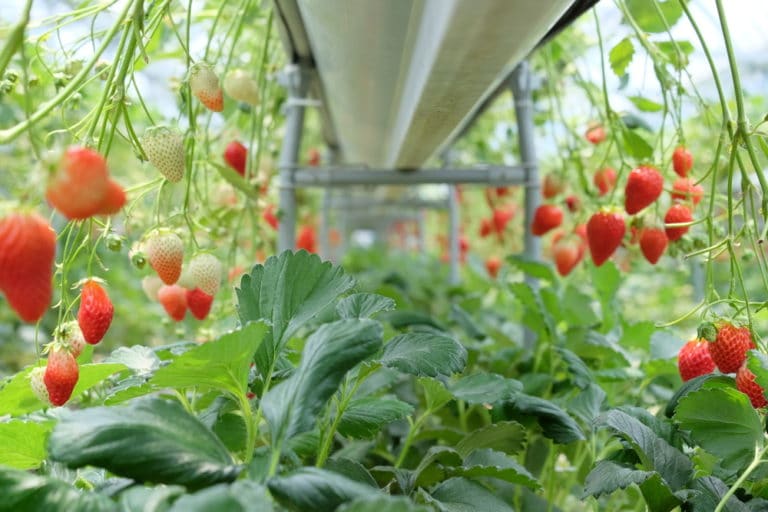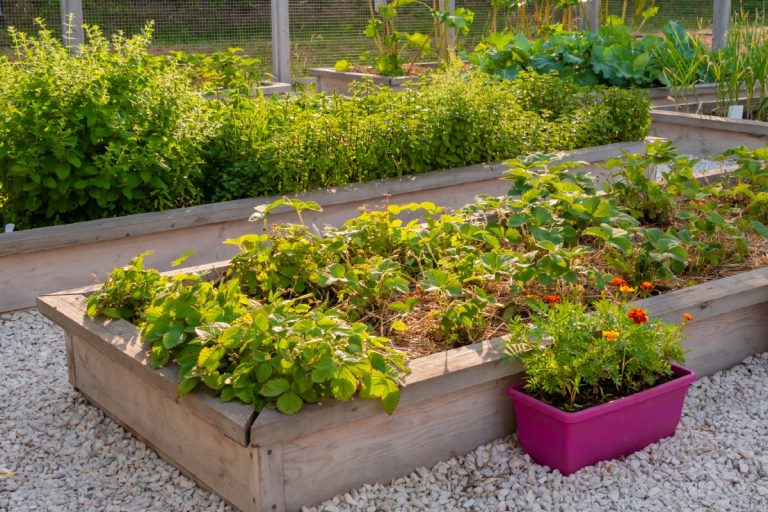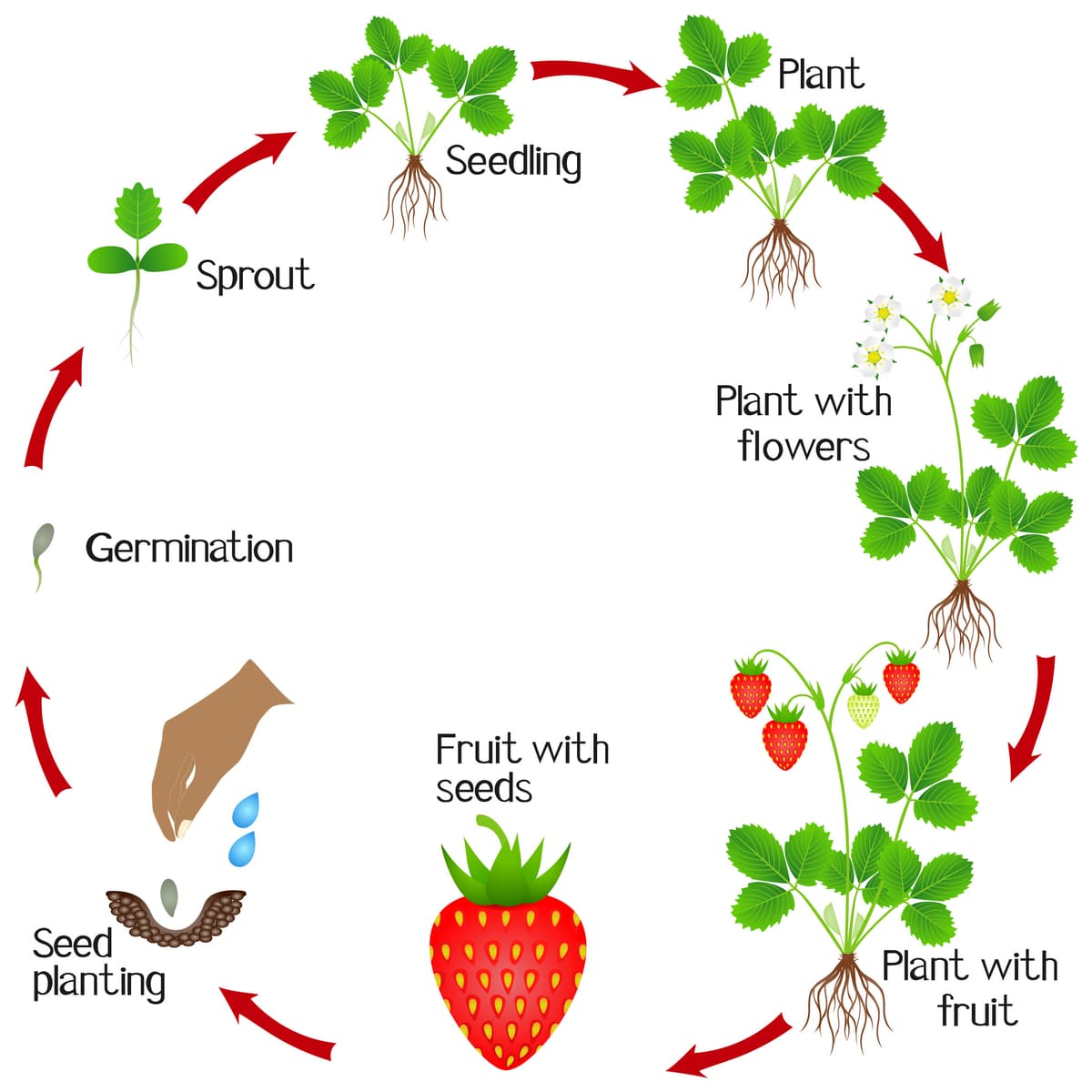The Strawberries’ Sweet Spot: Understanding the Ideal Growing Conditions
When it comes to growing strawberries, providing the right environment is crucial for success. Many people wonder “is it hard to grow strawberries?”, but the truth is that with the right conditions, anyone can enjoy a bountiful harvest. Strawberries require a delicate balance of temperature, sunlight, water, and soil to thrive. Temperature-wise, strawberries prefer cooler temperatures between 60°F to 70°F (15°C to 21°C), making them an ideal crop for spring and fall seasons. In terms of sunlight, strawberries need at least six hours of direct sunlight per day to produce well. Watering is also critical, as strawberries need consistent moisture, especially when they’re producing fruit. Finally, strawberries prefer well-draining, fertile soil with a pH between 5.5 and 6.5. By understanding and providing these ideal growing conditions, you’ll be well on your way to growing delicious and healthy strawberries.
How to Prepare the Perfect Strawberry Bed
Preparing the perfect strawberry bed is crucial for optimal growth and fruit production. Before planting, it’s essential to select a location that receives full sun and has well-draining soil. Strawberries prefer soil with a pH between 5.5 and 6.5, so test your soil to determine if any amendments are necessary. If your soil is heavy clay or sandy, mix in organic matter like compost or well-rotted manure to improve its structure. When choosing a strawberry variety, consider factors like climate, disease resistance, and desired fruit size. Some popular varieties include ‘Everbearing’, ‘June-bearing’, and ‘Day-neutral’. Once you’ve selected your variety, plant strawberries in the early spring or fall, spacing them 18-24 inches apart. Water thoroughly after planting and keep the soil consistently moist during the first few weeks. By following these steps, you’ll be well on your way to growing delicious and healthy strawberries, and wondering “is it hard to grow strawberries?” will be a thing of the past.
Overcoming Common Challenges: Pests, Diseases, and Nutrient Deficiencies
While growing strawberries can be a rewarding experience, it’s not without its challenges. Many people wonder “is it hard to grow strawberries?” and the answer is, it can be if you’re not prepared to overcome common issues. Pests like aphids, slugs, and snails can damage strawberry plants and reduce yields. To combat these pests, use organic control methods like neem oil, copper tape, and crushed eggshells. Fungal diseases like powdery mildew and botrytis can also affect strawberry plants, but can be prevented by providing good air circulation, removing infected plants, and using fungicides. Nutrient deficiencies, particularly in nitrogen, iron, and magnesium, can cause yellowing leaves, weak growth, and poor fruiting. To avoid these deficiencies, use a balanced fertilizer and conduct regular soil tests. By being aware of these common challenges and taking steps to prevent them, you can ensure a healthy and productive strawberry crop.
The Art of Watering: Tips for Consistent Moisture
Consistent moisture is crucial for healthy strawberry growth and fruit production. Strawberries need about 1-2 inches of water per week, either from rainfall or irrigation. However, it’s essential to avoid overwatering, which can lead to root rot and other problems. To determine the right amount of water, check the soil moisture by inserting your finger into the soil up to the knuckle. If the soil feels dry, it’s time to water. Water strawberries in the morning to allow the plants to absorb the water throughout the day. Avoid getting water on the leaves or fruit to prevent fungal diseases. Mulching around the plants can also help retain moisture and reduce evaporation. By providing consistent moisture, you’ll be well on your way to growing delicious strawberries and wondering “is it hard to grow strawberries?” will be a thing of the past. Additionally, consider using soaker hoses or drip irrigation systems to deliver water directly to the roots, reducing waste and runoff.
Fertilizing for Success: Nourishing Your Strawberry Plants
Fertilizing is a crucial step in growing healthy and productive strawberry plants. Strawberries are heavy feeders and require a balanced diet of nutrients to thrive. A well-balanced fertilizer with a ratio of 10-10-10 (nitrogen-phosphorus-potassium) should be applied at planting time and again after harvest. Additionally, strawberries benefit from regular applications of organic matter such as compost or well-rotted manure. These natural fertilizers provide slow-release nutrients and improve soil structure, making it easier for roots to absorb water and nutrients. Some strawberry growers also use foliar sprays or liquid fertilizers to provide an extra boost of nutrients during the growing season. By fertilizing correctly, you’ll be well on your way to growing delicious strawberries and wondering “is it hard to grow strawberries?” will be a thing of the past. It’s also important to note that overfertilization can be detrimental to strawberry plants, so it’s essential to follow the recommended application rates and guidelines.
Pruning and Training: Shaping Your Strawberry Plants for Maximum Yield
Pruning and training are essential techniques for promoting healthy growth, increasing yields, and encouraging fruiting in strawberry plants. By pruning, strawberry growers can remove dead, diseased, or damaged leaves and stems, allowing the plant to focus its energy on producing fruit. Training strawberry plants involves providing support and guidance to encourage them to grow in a way that maximizes fruit production. This can be achieved by using strawberry jars or containers with built-in supports, or by providing a trellis or stake for the plants to climb. Regular pruning and training can also help to increase air circulation and sunlight penetration, reducing the risk of disease and pests. Additionally, pruning can help to promote runners, which are long stems that produce new plants, allowing strawberry growers to propagate new plants and expand their crop. By mastering the art of pruning and training, strawberry growers can overcome common challenges and enjoy a bountiful harvest, making the question “is it hard to grow strawberries?” a distant memory.
Harvesting at the Right Time: Enjoying Your Fresh Strawberries
Harvesting strawberries at the right time is crucial to enjoy their sweet flavor and aroma. Strawberries are typically ready to harvest about 60 days after planting, but the exact timing depends on the variety and growing conditions. To determine if strawberries are ripe, gently tug on the fruit. If it comes off the plant easily, it’s ready to eat. Ripe strawberries will be bright red, plump, and slightly soft to the touch. Avoid squeezing the fruit, as this can bruise it and reduce its shelf life. Harvest strawberries in the morning, when they’re at their sweetest and most flavorful. After harvesting, store strawberries in a cool, dry place to maintain freshness. Wash them gently before consuming, and pat them dry with a clean towel to remove excess moisture. By harvesting strawberries at the right time and storing them properly, you’ll be able to enjoy your fresh, delicious strawberries and wonder “is it hard to grow strawberries?” will be a thing of the past. With proper care and attention, strawberry plants can produce multiple harvests, providing a bountiful supply of fresh fruit throughout the growing season.
Troubleshooting Common Issues: Solving Strawberry Growing Problems
Despite best efforts, strawberry growers may encounter common issues that can hinder the success of their crop. Poor fruiting, yellowing leaves, and weak growth are just a few examples of problems that can arise. However, with the right knowledge and techniques, these issues can be overcome. For instance, poor fruiting can be caused by inadequate pollination, which can be resolved by attracting more pollinators to the garden or by manually pollinating the plants. Yellowing leaves can be a sign of nutrient deficiency, which can be addressed by adjusting the fertilizer regimen. Weak growth can be caused by pests or diseases, which can be controlled by using organic or integrated pest management methods. By being aware of these common issues and knowing how to address them, strawberry growers can minimize losses and maximize yields. With proper care and attention, the question “is it hard to grow strawberries?” becomes a distant memory, and strawberry growers can enjoy a bountiful harvest of delicious and nutritious strawberries. By troubleshooting common issues and taking proactive steps to prevent them, strawberry growers can ensure a successful and rewarding growing experience.







